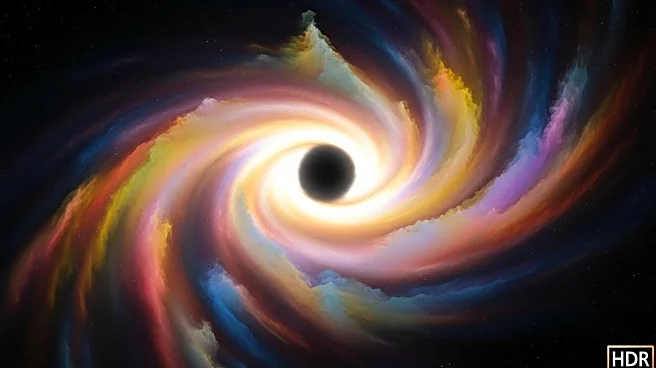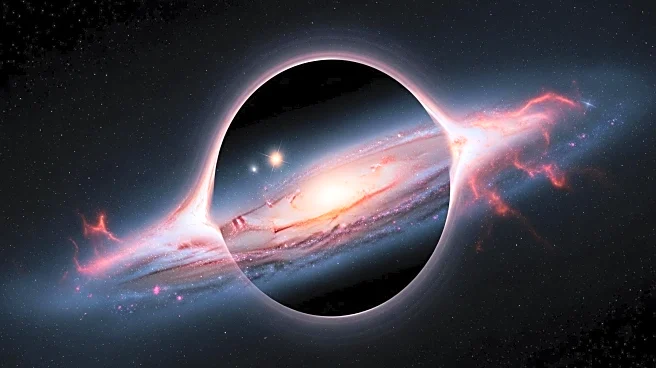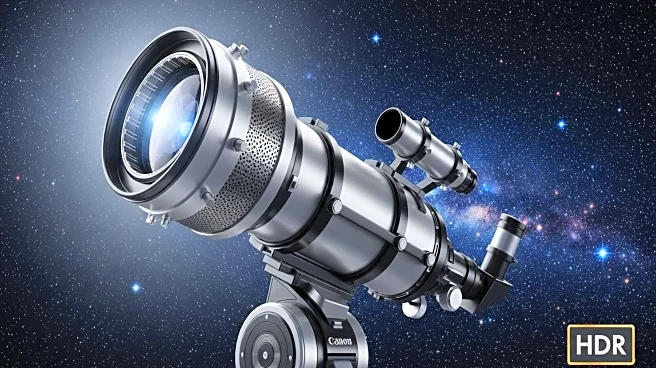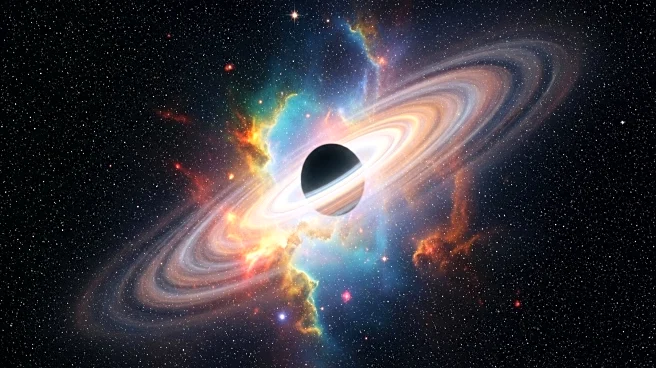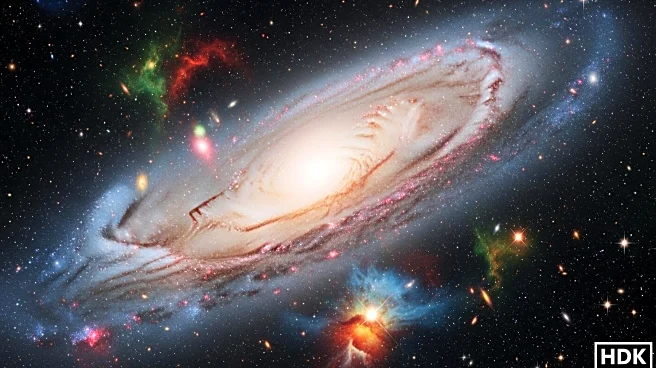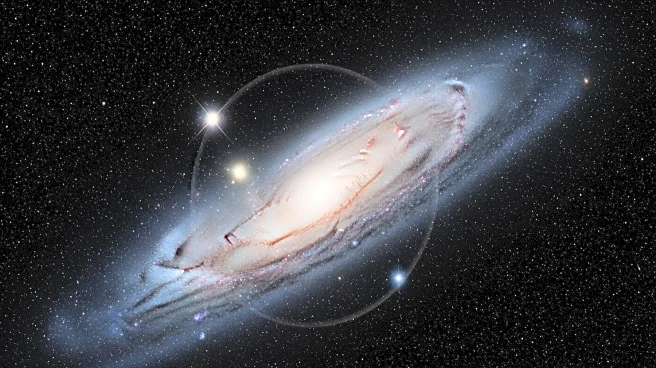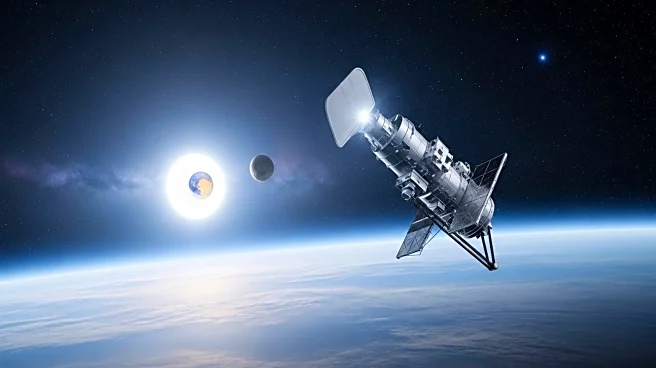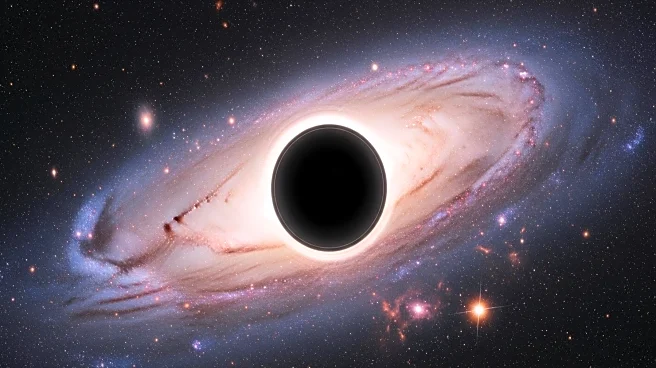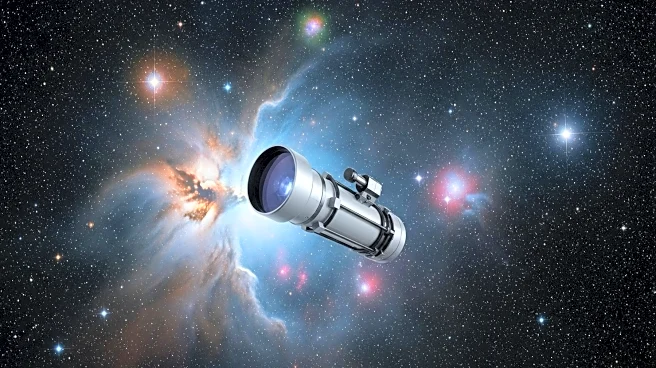What's Happening?
Astronomers have discovered a supermassive black hole, RACS J0320-35, growing at an unprecedented rate, challenging existing cosmic models. Located in the early universe, this black hole is expanding at over twice the theoretical Eddington limit, which describes the maximum growth rate for black holes. Using NASA's Chandra X-ray Observatory, researchers have found that this black hole, formed just 920 million years after the Big Bang, is consuming matter at a rate of 300 to 3,000 solar masses per year. This discovery raises questions about the fundamental nature of black holes and the early universe.
Why It's Important?
The rapid growth of RACS J0320-35 challenges the current understanding of black hole formation and growth, suggesting that super-Eddington growth may have been more common in the early universe than previously thought. This could have significant implications for models of cosmic evolution, potentially affecting theories about the formation and evolution of galaxies. The discovery prompts a reevaluation of the physical processes that govern black hole growth and the conditions of the early universe, which could lead to new insights into the fundamental laws of physics.
What's Next?
Further research is needed to understand how RACS J0320-35 can surpass the Eddington limit without destabilizing. Scientists aim to explore whether unique environmental conditions in the early universe facilitated such rapid growth or if unknown physical processes are at play. This could involve studying other early universe black holes identified by telescopes like the James Webb Space Telescope. The findings may lead to revisions in cosmic evolution models and provide a deeper understanding of the universe's earliest epochs.
Beyond the Headlines
The discovery of RACS J0320-35 opens new avenues for astrophysical research, challenging existing theories and prompting scientists to explore unconventional ideas about black hole growth. It highlights the need for a comprehensive picture of cosmic history and may lead to the discovery of new physical laws governing the universe. As astronomers continue to study these enigmatic objects, they will uncover further secrets of the universe's early days, potentially reshaping our understanding of cosmic evolution.

